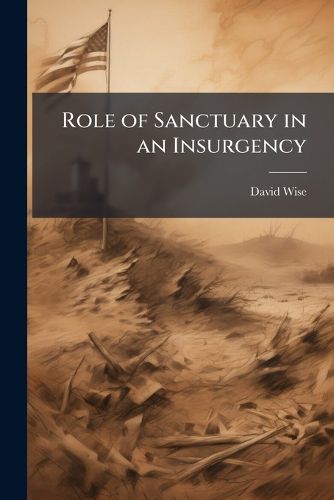Readings Newsletter
Become a Readings Member to make your shopping experience even easier.
Sign in or sign up for free!
You’re not far away from qualifying for FREE standard shipping within Australia
You’ve qualified for FREE standard shipping within Australia
The cart is loading…






Insurgency is a time-honored form of warfare that allows a weaker opponent to subvert the power of a stronger foe. At the turn of the nineteenth century, Spanish guerrillas waged an effective insurgency against the premier army of the period-Napoleon's Grand Armee. In the eighteenth, nineteenth, and twentieth century, numerous European colonies around the globe used insurgent strategies to secure their independence. In each case, sanctuary served as a critical ingredient for the insurgent successes and the importance of all forms of sanctuary was acknowledged by insurgents and counterinsurgents alike. The significance of insurgent sanctuary is that it allows the insurgent to preserve and protect limited resources and provides protected access to additional resources. Traditionally, insurgencies relied upon the physical and social sanctuaries provided by geography and social conditions. Advances in technology and globalization provide insurgents with additional forms of refuge unavailable during the eighteenth century--virtual and legal. Individually these modern modes of sanctuary consist of a complex array of nodes and links. Collectively, they form a system of great structural and interactive complexity. The resulting complex, adaptive system forces planners to change the way they analyze and address insurgent sanctuary. Specifically, defeating, mitigating or containing sanctuary requires a holistic, qualitative, and systemic operational approach. SOD/CACD uses systemic framing to gain an appreciation of the entire insurgent system of sanctuary and to understand the behavior of the nodes and links across the entire spectrum of physical, social, virtual, and legal modes. This systemic appreciation facilitates analysis of which nodes and links provide the insurgency with refuge and access to resources. This informed analysis allows operational planners to design a comprehensive campaign to achieve desired effects on these nodes and links. Defeating, mitigating, or
This work has been selected by scholars as being culturally important, and is part of the knowledge base of civilization as we know it. This work was reproduced from the original artifact, and remains as true to the original work as possible. Therefore, you will see the original copyright references, library stamps (as most of these works have been housed in our most important libraries around the world), and other notations in the work.
This work is in the public domain in the United States of America, and possibly other nations. Within the United States, you may freely copy and distribute this work, as no entity (individual or corporate) has a copyright on the body of the work.
As a reproduction of a historical artifact, this work may contain missing or blurred pages, poor pictures, errant marks, etc. Scholars believe, and we concur, that this work is important enough to be preserved, reproduced, and made generally available to the public. We appreciate your support of the preservation process, and thank you for being an important part of keeping this knowledge alive and relevant.
$9.00 standard shipping within Australia
FREE standard shipping within Australia for orders over $100.00
Express & International shipping calculated at checkout
Insurgency is a time-honored form of warfare that allows a weaker opponent to subvert the power of a stronger foe. At the turn of the nineteenth century, Spanish guerrillas waged an effective insurgency against the premier army of the period-Napoleon's Grand Armee. In the eighteenth, nineteenth, and twentieth century, numerous European colonies around the globe used insurgent strategies to secure their independence. In each case, sanctuary served as a critical ingredient for the insurgent successes and the importance of all forms of sanctuary was acknowledged by insurgents and counterinsurgents alike. The significance of insurgent sanctuary is that it allows the insurgent to preserve and protect limited resources and provides protected access to additional resources. Traditionally, insurgencies relied upon the physical and social sanctuaries provided by geography and social conditions. Advances in technology and globalization provide insurgents with additional forms of refuge unavailable during the eighteenth century--virtual and legal. Individually these modern modes of sanctuary consist of a complex array of nodes and links. Collectively, they form a system of great structural and interactive complexity. The resulting complex, adaptive system forces planners to change the way they analyze and address insurgent sanctuary. Specifically, defeating, mitigating or containing sanctuary requires a holistic, qualitative, and systemic operational approach. SOD/CACD uses systemic framing to gain an appreciation of the entire insurgent system of sanctuary and to understand the behavior of the nodes and links across the entire spectrum of physical, social, virtual, and legal modes. This systemic appreciation facilitates analysis of which nodes and links provide the insurgency with refuge and access to resources. This informed analysis allows operational planners to design a comprehensive campaign to achieve desired effects on these nodes and links. Defeating, mitigating, or
This work has been selected by scholars as being culturally important, and is part of the knowledge base of civilization as we know it. This work was reproduced from the original artifact, and remains as true to the original work as possible. Therefore, you will see the original copyright references, library stamps (as most of these works have been housed in our most important libraries around the world), and other notations in the work.
This work is in the public domain in the United States of America, and possibly other nations. Within the United States, you may freely copy and distribute this work, as no entity (individual or corporate) has a copyright on the body of the work.
As a reproduction of a historical artifact, this work may contain missing or blurred pages, poor pictures, errant marks, etc. Scholars believe, and we concur, that this work is important enough to be preserved, reproduced, and made generally available to the public. We appreciate your support of the preservation process, and thank you for being an important part of keeping this knowledge alive and relevant.